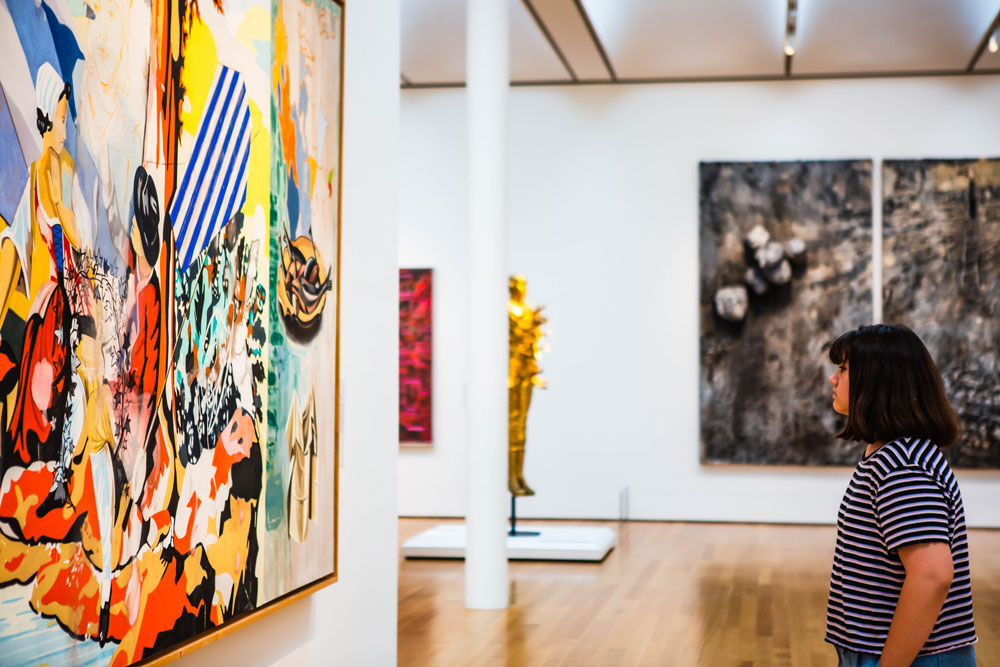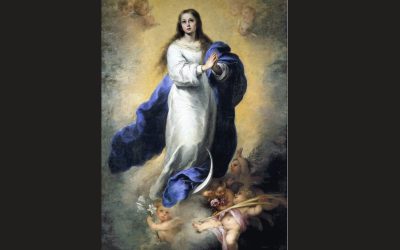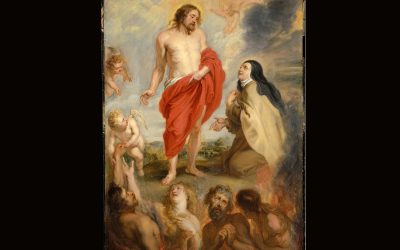By Rose Leigh
As a freshman in college, I had the opportunity to take several trips with other art students to New York City. In one art gallery, I was surprised to find that the entire exhibition consisted of giant concrete blocks arranged in various ways. I walked around, confused. What’s the meaning behind “artwork” like this? What does it say about society that things like this are considered great art?
This month, as part of our reflections on art and entertainment, we’ve delved a bit into how art influences a society. But there’s also the flipside—art reflects a society’s values and what it considers “good.”
Art is a Mirror to Culture
We can find many examples of cultural values influencing art throughout art history. Ancient Greek art, for instance, often depicted religious or mythical figures, who were important in Greek culture. But on ancient Greek painted pottery, we can also see scenes of war, athleticism, rowdy drinking parties, funerals, and other activities that tell us about their culture and worldview.
As another example, the Renaissance marked a cultural return to classical Greek and Roman philosophy, as well as an emphasis on individualism, the beauty of nature, and science. Of course, Christianity was very important in society, too. You can see how these cultural and religious values influenced the subjects Renaissance artists chose to depict (religious figures, classical myths) and their emphasis on realistic perspective and human anatomy.
We could discuss any historical period and trace how cultural values and major events are reflected in the art of that time. But what about ugly modern sculptures that don’t seem to have any discernible meaning, or paintings that your toddler could have slapped together?
Inside Modern Art
As I went through art history courses in college, I started learning about Minimalism, Postmodernism, Cubism, and other artistic movements from the past century. The bizarre artworks found in art museums reflect these modern philosophies, which means modern art does have discernible meanings behind it, just like art from other historical periods.
To generalize, there’s a trend in art movements of the past century to intentionally reject conventional artistic skill, make meaningless art, or experiment with very non-traditional subjects. This art often favors political statements, demonstrations of life’s absurdity, self-expression, or sexual expression over aesthetics or the traditional ways of making art. Some of this experimentation isn’t wrong in itself, but it often stems from an underlying rejection of or apathy toward God, authority figures, institutions, and objective truth.
For example, the Dada movement created nonsensical artwork after World War I to emphasize the absurdity they saw in life and to offend the institutions that had begun WWI. In the 1950s–70s, Pop artists made sculptures and paintings of ordinary, mass-produced items like soup cans and comic strips, replacing people, nature, or other traditional subjects in art. Conceptual art in the 1960s–70s held that “the idea or concept behind the work of art became more important than the actual technical skill or aesthetic”—sometimes the art is simply words and not physical at all. A recent child of Conceptualism is Salvatore Garau’s “Il Sono”, an “invisible sculpture” that, despite not actually existing, sold for over $18,000.
I don’t typically appreciate these art movements, but the point is that we can’t dismiss them as fringe cultural fads. Contemporary art points to what our culture has become. In the last century, Western culture has moved away from Christianity and towards secularism, relativism, and over-sexualization. Most art movements of the 20th and 21st centuries are reactions against Christian values and do not point to God by showing the true, the good, and the beautiful.
Now, to be fair, fallen human nature has influenced art all throughout history. There’s degenerate art in every age. However, I think it’s obvious that from the Catholic perspective, there’s been a particularly steep religious and cultural decline in Western countries over the past several decades. And, more importantly, this culture is the one we must live in and can influence.
There’s Hope
Despite all of this, people still know deep down that truth, goodness, and beauty are important. I think that the general public dismisses ‘weird’ contemporary art pieces because they intuitively believe that life does have meaning, beauty has value, and the transcendent brings us closer to God.
In New York City, I’ve seen many art galleries and artwork for sale that reach back to traditional techniques and subjects. If you look at the Internet, you’ll also find many skilled oil, watercolor, and digital painters who create beautiful works of art.
In the Catholic Church, many dioceses and parishes are reaching back to traditional forms of architectural, artistic, and musical beauty after decades of post-Vatican II experimentation. Instead of building churches that look like warehouses, we’re erecting beautiful new churches with art that is meant to help people pray. Hymnals like the St. Michael Hymnal are being published with both traditional and contemporary hymns that communicate sound theology, and composers are writing liturgical music that supports the liturgy.
When sacred architecture, artwork, and music are implemented into the liturgy well, they are transcendent, remind us of heaven, and help us pray. Weak sacred art, however, transfers the focus from God to whatever “interesting” idea the artist was going for, or how ugly the ceiling is. Good art points toward greater things.
The next time you see a bewildering piece of secular or sacred art, remember that art isn’t dead. The art world is beleaguered by anti-Catholic ideologies, but true, good, and beautiful art is still being made and appreciated.
A great book that I’ve read on this topic and was inspired by for this post is Saving Leonardo by Nancy Pearcey.

Rose Leigh
Rose has been drawing and writing since she could hold a pencil, creating worlds of giants, fairies, and adventurers from her imagination. She works as a graphic designer and loves discussing the good and creative aspects of literature, art, and film.






Learning about art is good. For an in depth look at Sacred Art and Modern Art look at my lecture delivered a few years ago at Ave Maria University.
https://corneliussullivan.com/Sacred%20Art%20II%20Sacred%20Art%20and%20Modernism-html
There is a brilliant new book by Vatican art Historian Elizabeth Lev called “How Catholic Art Saved the Faith”. She explains that when Martin Luther and Protestants rejected confession artists painted Mary Magdalene weeping over her sins and the repentant Saint Peter. The art made repentance beautiful.
Good article! Thank you!
This site is dedicated to renewing art to reflect the good, the beautiful, and the true:
https://artrenewal.org/
An excellent book on this is Saving Leonardo by Nancy Pearcey, published in 2010. It helped me understand better how much of modern art is designed to replace our Judeo Christian worldview with a secular worldview.
Saving Leonardo is a great book! I wish I’d had it in college.
I am encouraged to know that there are artists today that are using their skill to counteract the art of our “culture of death” which is an affront to all of our senses and humanity itself.
Thank you for another good and thought provoking article.
I recently heard a line from Shtisel, a television series depicting the life of an orthodox Jewish family in modern day Jerusalem:
“Art is something invented by Gentiles because they don’t have Torah.”